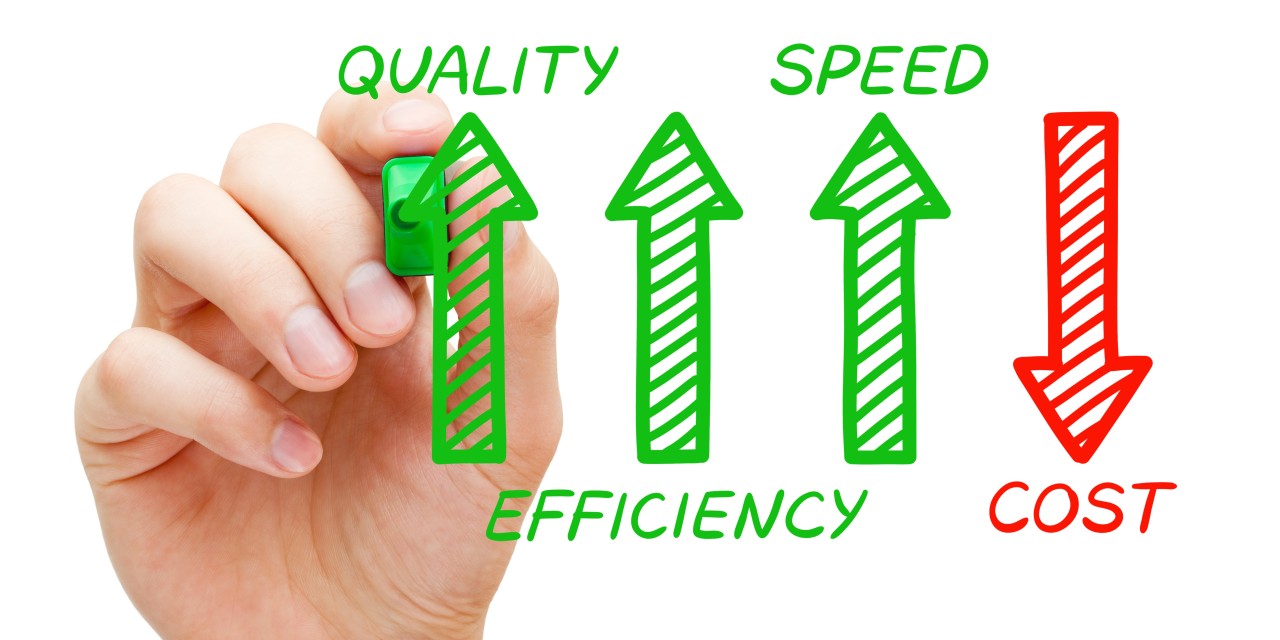Introduction to Automation in Logistics
Have you ever thought about how Amazon delivers packages quickly and efficiently? And how does technology change the way products are shipped? These can be critical problems for companies looking to increase productivity and reduce expenses in logistics operations.
Logistics automation is transforming businesses in ways we never thought possible. Let’s explore how operations change and, most importantly, the benefits they can bring and, most importantly, the benefits they can get to your business. You’ve come to the right place if you’ve been wondering how to integrate modern technology into your business and what tools you’ll need.
Read also: 3PL vs. 4PL vs. 5PL: Understanding the Key Differences Between Logistics Providers
What is Automation in Logistics?
I am sure by now you have heard of automation, but what is it really? Automation in logistics is like putting technology to do the heavy lifting, reducing errors and saving time. Instead of people doing all the tasks, machines and intelligent systems come into play. This helps companies to better organize products, from storage to delivery to the end customer, for example in a warehouse where robots are responsible for moving the products from one side to the other. They are doing this quickly and accurately, which reduces the time it would take if it were done by people. In addition, errors are also reduced, as the robots follow only the programmed instructions.
This technology not only makes everything faster, but more intelligent. Automated systems can track inventory in real-time. This means that whenever something is sold or arrives at the warehouse, the system updates the information automatically. This way, you always know exactly what is available, avoiding problems such as selling products that are out of stock.
Another strong point is delivery. Automation can help plan delivery routes more efficiently, choosing paths that save time and fuel. Imagine a system that analyzes traffic in real-time and suggests the best route for the driver. This not only speeds up delivery but also contributes to customer satisfaction, as they receive their order faster.
In short, automation in logistics is a major step forward for companies that want to be more efficient and reduce costs. With robots and intelligent systems, it is possible to do more with less, ensuring that the right products arrive at the right places at the right time.
Why your Business Needs Automation for Fulfillment
When we talk about automation in logistics, we’re looking at a world where technology streamlines and improves operations, making everything more efficient and less prone to errors. Here’s how this can benefit both businesses and customers:
Improved Accuracy: Automation reduces errors because machines follow exact standards. Imagine no longer having to deal with packages being sent by mistake or items being missing. This level of accuracy ensures that every order is processed correctly, increasing service reliability.
Cost Reduction: Automating processes means doing more with less. Less time spent on manual tasks results in fewer paid hours of work and less resource use. For example, an automated system can better organize delivery routes, saving fuel and time.
Customer Satisfaction: Happy customers are the heart of any business. With automation, orders are processed and delivered faster. This not only improves the customer experience with your brand but also increases the likelihood that they will buy from you again.
Automation in logistics is not just a trend, but a necessary evolution to meet the demands of an increasingly fast-paced and demanding market. Investing in technology is investing in the future of your company and the satisfaction of your customers.
How Does Automation Reduce Operating Costs?
Automation not only makes processes faster and more efficient, but it also helps to significantly cut costs. Let’s see how this happens:
Faster processes: Imagine automated robots organizing products in a warehouse. They do this much faster than humans, which means less time and money spent on labor.
Fewer errors: Automated systems are programmed to follow exact rules. This reduces the chance of errors, which often lead to rework and unplanned expenses.
Saving resources: With automation, it is possible to optimize the use of materials, energy, and even time. For example, software that optimizes delivery routes can reduce fuel consumption and, consequently, transportation costs.
Efficient inventory control: Automated systems provide precise control of what you have in stock, helping to avoid excess or shortages of products. This can mean significant savings in terms of space and financial resources.
Automation offers an effective way to reduce expenses, making operations not only more agile but also more cost-effective. With fewer errors and faster processes, your company can achieve a significant competitive advantage by offering better quality services at lower prices. This is essential in a market that is constantly changing and becoming more competitive.
Increased Efficiency and Speed in Processes
Automation has transformed the business landscape, especially in reducing operational costs. It streamlines processes, minimizes errors, and saves time and money. Let’s explore some of its main benefits:
Speed in processes: With automation, repetitive and time-consuming tasks are performed quickly by machines. For example, in a warehouse, robots can organize products in less time than humans, reducing labor costs.
Reduced errors: Automated systems are programmed to follow precise instructions, which drastically reduces the margin of error. Fewer errors mean less rework and, consequently, less expense. Imagine a data entry system that automatically checks information, avoiding errors that could lead to wrong orders or customer returns.
Resource savings: Automation enables more efficient use of materials and energy. A good example is software that optimizes delivery routes, saving fuel and reducing transportation costs.
Efficient inventory control: Automated systems ensure more precise inventory control. This prevents both excess and shortages of products, optimizing the use of warehouse space and avoiding unnecessary storage costs and unsold products.
Automation is a valuable tool for cutting costs and making operations more efficient. Adopting this technology not only speeds up processes but also increases the quality of the service offered, all while reducing costs. This is essential in a competitive market, where every detail can make all the difference in the success of a business.
Automation in Action:
Want to see how automation in logistics can change everything? Let’s talk about how businesses that have invested in this technology are reaping the rewards. Automation helps make the entire process faster and error-free, which is great for both the company and the customers. Here are just a few examples:
Better inventory control: Imagine that an online store can automatically check what is missing or excess in stock. This is possible thanks to systems that organize and track products in real-time. This prevents buying too much or too little product, reducing costs and storage space.
Optimization in order separation: Companies that adopt automatic systems to separate orders save time. Robots can locate and collect products much faster than humans. In addition, they don’t get tired or make mistakes due to distractions.
Intelligent delivery routing: Have you ever thought about calculating the fastest and most economical route in just a few seconds? With automation, this is a reality. Advanced systems consider traffic, distances, and even weather conditions to suggest the best route for deliveries. This means less time on the road and more deliveries made on time.
Automating logistics processes is not just a matter of following the trend. It is a smart strategy to cut costs, increase efficiency, and satisfy customers more. Companies of all sizes, from small to large, can benefit from this technology. So, how about considering automation for your logistics operation?
What is the Difference Between Automation and Mechanization?
We often confuse it with mechanization. Let’s clarify how mechanization helps in replacing manual tasks with machines. Automation, on the other hand, goes a step further, adding intelligence to processes.
Mechanization helps a lot in the day-to-day running of a warehouse. For example, conveyor belts that move products from one side to the other are a type of mechanization. They make work easier but still require someone to keep an eye on them and control their operation.
In turn, automation is more sophisticated. It not only does the mechanical work but also thinks for itself. A good example is inventory management software. This type of program not only keeps track of how many products come in and out. It also analyzes data and predicts when it will be necessary to restock, doing all the planning automatically.
Automation is notable for its ability to learn and adapt, continually improving processes. It makes logistics operations not only more efficient but also smarter and more agile. Mechanization brings benefits, but automation takes everything to a new level, offering solutions that truly understand and adapt to market needs.
Essential Tools for Automation in Logistics
To improve efficiency and accuracy in logistics, investing in technological tools is essential. These systems not only simplify operations but also ensure more accurate and faster results. Let’s explore some essential tools for those who want to innovate in the logistics area:
Warehouse Management Software: This tool helps you organize your inventory efficiently. Imagine being able to know exactly where each product is stored with just a few clicks. This reduces the time spent searching for items and reduces errors when sending products to customers.
Tracking Systems: With these systems, you can monitor the path of products in real-time. This is especially useful for predicting and resolving delivery problems, ensuring that customers receive their purchases on time.
RFID Technology: This technology allows you to automatically track products through electronic labels. It’s like having a scanner that reads product information remotely, making it easier to check inventory and speeding up the loading and unloading process.
Integrated Management Systems: Integrating different areas of the company through a single system allows for a complete view of the logistics process. This makes it possible to better coordinate inventory, sales, and delivery activities, optimizing the entire process and reducing costs.
Investing in these tools not only improves operational efficiency but also contributes to a better customer experience. By ensuring fast and accurate deliveries, your company stands out in the market, winning over and retaining customers. Therefore, considering these technologies is crucial for those seeking excellence in logistics.
Adopting logistics automation tools means being one step ahead. With systems such as real-time tracking and robots for stock movement, operations become faster and less susceptible to errors. This is essential in a market that demands agility and precision.
So, if you haven’t started automating your logistics yet now is the time. It’s not just a way to stay competitive, but a necessity to grow sustainably and effectively. Unlock your business’s full potential with a trusted 3PL partner. Contact us today to explore how our tailored logistics solutions.
Trending articles:




